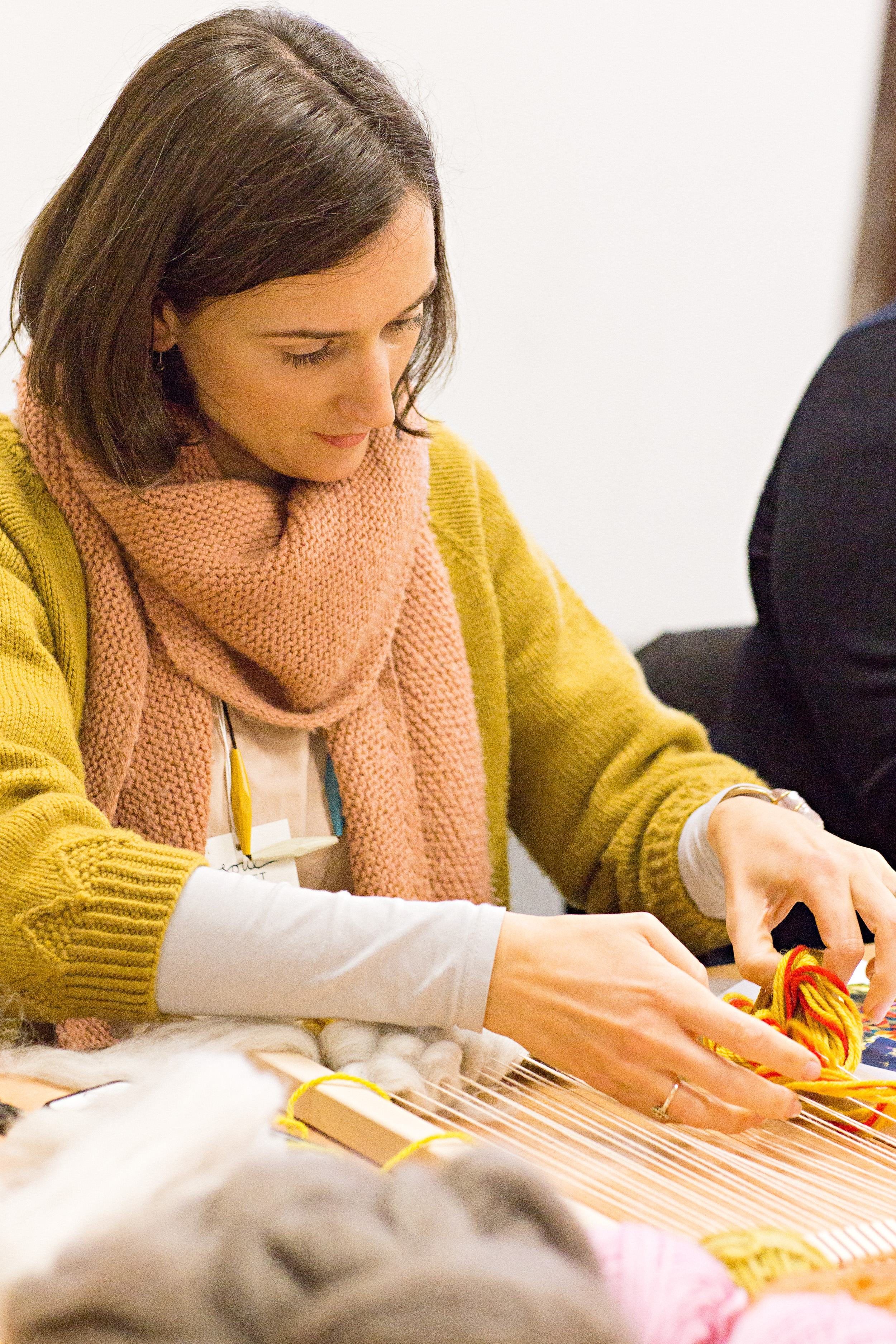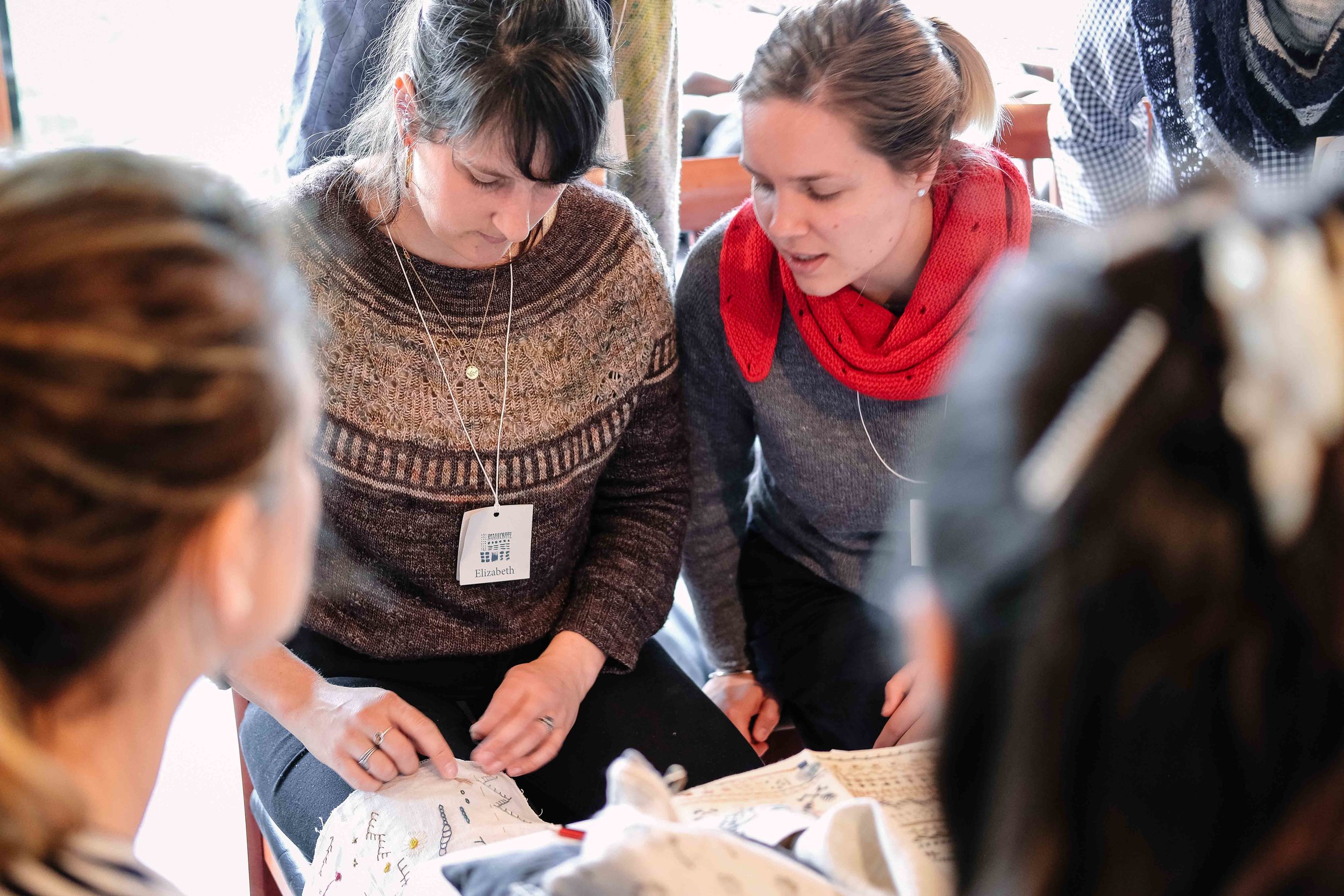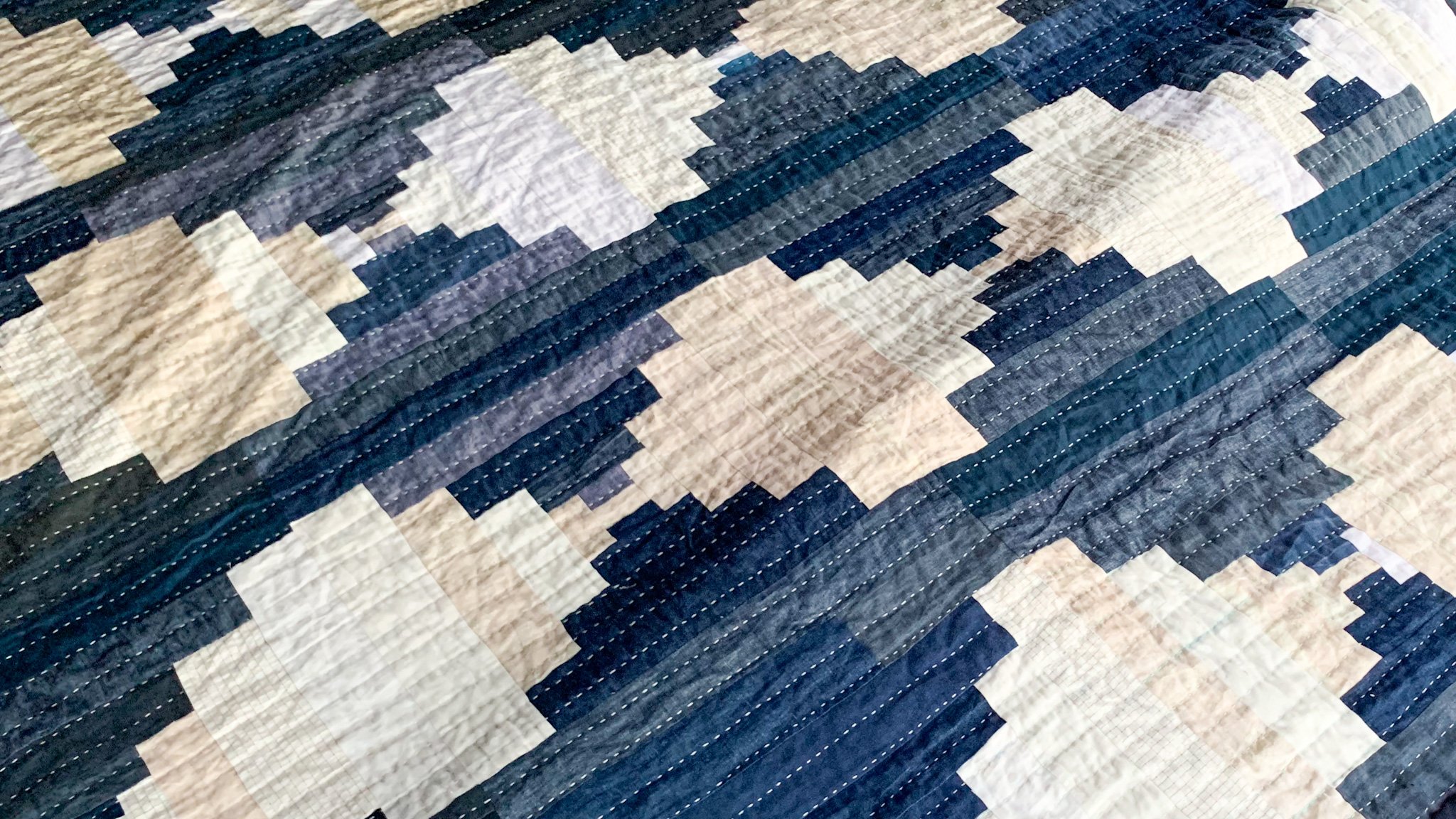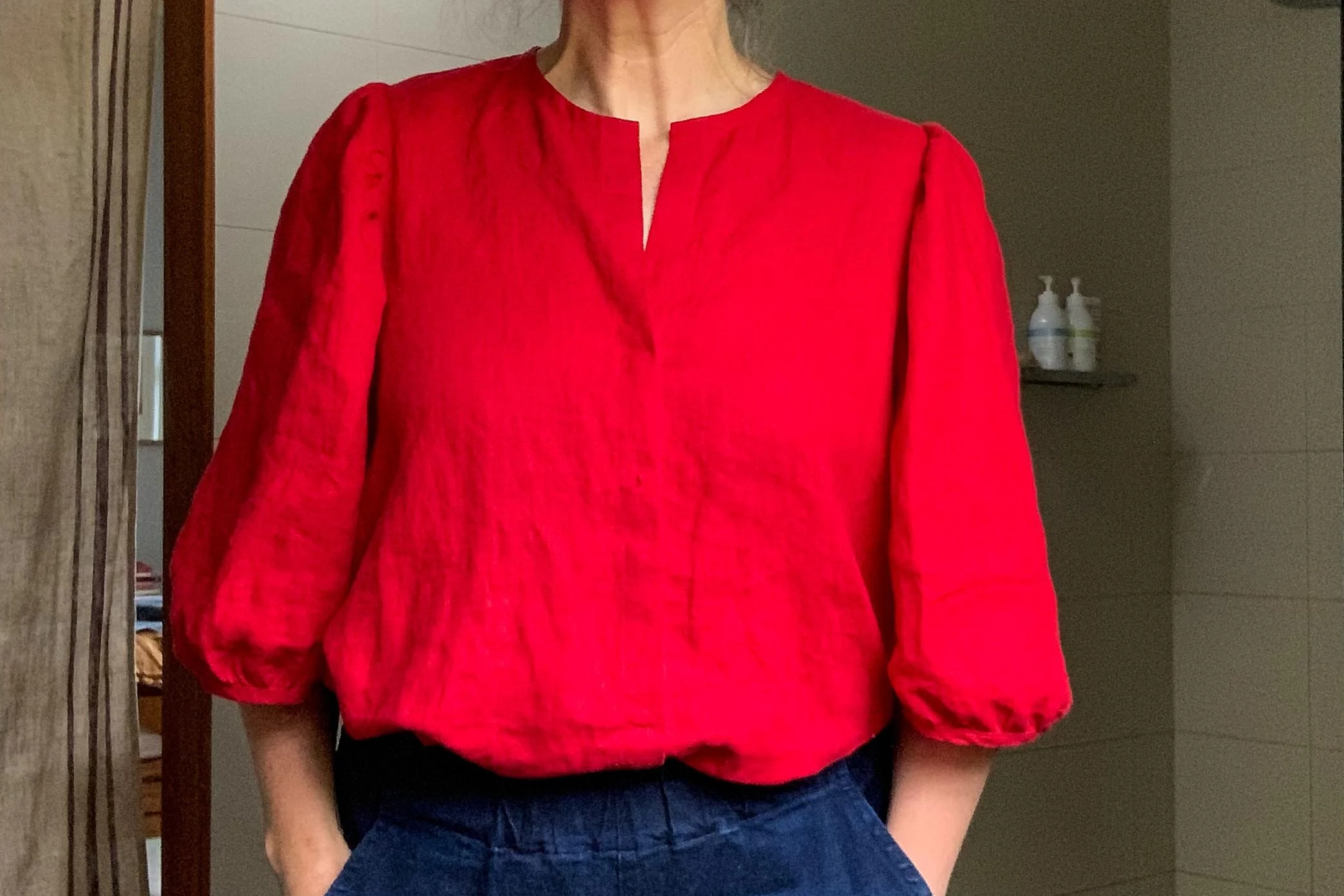Dear Crafters,
This week has seen some incredibly important conversations within our making community about race, diversity, inclusion and representation. Like many of you, I’ve been reading and listening, and learning, and thinking all week.
For me though, this is not my introduction to these ideas. Just over six months ago, I was grateful to receive an email where I was called in about the lack of diversity and representation at Soul Craft, the festival I ran in June of 2018 in Melbourne.
I want to apologise to anyone who was impacted by the programming of the festival. To anyone who felt that they wouldn’t be welcome, or who felt unseen, unheard and unrepresented I’m very sorry. I got it very wrong.
I want to add that I’m also sorry to anyone who came to Soul Craft and who felt othered or unwelcome in the space I created.
Right before the festival, a woman emailed me to tell me that while she loved my writing, my ideas ,and my attempts to connect community, that she had decided that she couldn’t attend the festival. She said that when she looked through speakers, demonstrators and teachers, that she was really disappointed to discover that the program line up was almost all white women. As I read the email I fell into a shame hole because I knew she was right. This generous woman went on to say that as a leader, as an event creator, and as thoughtful as she believed me to be, that she knew I could do better in the future.
I emailed her back to thank her, and started reading that day, and have been listening, and reading, and examining my privilege, views and values since then. What I’ve learned has changed me forever, and while I have a lot more to learn, I’ve realized this week that although I took on what she said and what I’ve learned, I didn’t say it out loud, and I haven’t apologized publicly.
Receiving the email was a reckoning. I knew I needed to understand what I’d done better. I started following and reading intersectional writers and black feminists like @rachel.cargle, @catricemjackson and @laylasayad. And I’ve been reading books and blogs and feminist websites and opinion pieces in newspapers. Importantly, I also downloaded Layla’s Me and White Supremacy handbook when it was released, and have been working through it. There is something about doing rather than just reading that has been incredibly instructive.
I’ve found our attitudes, thought patterns, and blind spots are most visible in the comments on the Instagram posts of the women I’ve been following. Reading other people’s comments has helped me understand my own thoughts, biases and privilege better. As I’ve been reading I’ve been sitting in the discomfort of being wrong, realizing that I’m ignorant and finding myself lacking. The more I read the more I realise how much more work there is to do, how much more there is to unpack.
I’ve been away the last week and so while I’ve been trying to keep up with the discussion, and keep listening, I missed parts of it. But I’ve seen there are a couple of prevalent ideas that keep coming up that I want to attempt to address.
Intention doesn’t matter, impact does. Action is needed, not intention.
Over the last week there have been a lot of comments about intention, and it has become clear to me that we don’t seem to deeply understand that our intention doesn’t matter.
I am going to use myself, and my failure to act, as an example. I feel this is important as I’m worried that people reading this, will defend my intentions.
My intentions don’t matter because they don’t change the impact to the people who were hurt.
I was trying to create something truly special with Soul Craft – an event that was about making and ideas, and well-being, and community, and mental health. I was trying to be a good person, doing good things, putting good stuff into the world.
I had discussions early on with numerous people about diversity. I had intentions. BUT!! during the planning, through one small decision at a time, these intentions were deprioritised.
The result was a space that was not inclusive to all of our community. The result was a lineup that was not diverse. The impact was that people didn’t feel included or seen or represented as there was no visible representation of diversity. The impact was hurtful.
And so why would I believe that my intentions matter. They don’t. The hurt matters.
Action is different to intention. You see, when I started Soul Craft I created policy to make sure that we prioritised and focused on key areas that I believed were important. Creating these policies was an action, not an intention. Soul Craft had a Connection Policy, a Low Waste Policy and a Giving Back policy. * Getting consciously active about these areas meant that we achieved our aims as they were stated. I did not have a anti-racism policy about diversity and inclusion and representation. And so my intentions melted away without me actually doing anything concrete.
We must act rather than intend.
I have a responsibility to address the privilege I am a recipient of.
This week has shone a light on people like me, people with platforms, and how we use them. Without centering ourselves, we need to amplify the voices of Aboriginal and Torres Strait Islander** and BIPOC who are doing the work.
I have sat on this post as I didn’t want to be reactive. I needed to sit with it as I wasn’t sure if telling you this story was centering, or inserting myself into the narrative, or if it would be helpful. But after sitting with it and learning from the voices in the discussion this week, I believe it’s really important for me to clearly state how I have been complicit in the lack of diversity represented within our community.
I still don’t know if I’ve got it right but I know that trying is right. I do know that apologizing is right. But I also know that it is a privilege to choose whether or not to try to get it right. I know that waiting is the definition of white privilege. That I can wait to talk about it till I’m ready, till I believe I can do it better, because I am privileged. Because I can choose to engage, or not engage, around race because I am white.
If I am truly going to engage with the process of doing things better, I need to act, and this email is part of me trying to do better.
I will work hard to do better with Soul Craft, and to use the privilege I have to be active. As such, I will be having many conversations about diversity, representation, inclusion and anti-racism over the next year as I begin to plan the next event.
The biggest thing that came out of the conversation last week for me is how entrenched and pervasive and subtle and overt our racism is. And how much we need to begin this conversation as a community. This work can’t be done quickly – it takes sitting and listening and time and thought to unpack our internalized racism - it will be ongoing work and an ongoing conversation.
Thank you to all those who have done the incredibly thoughtful tricky work to pull us up and keep us accountable over the last week. Thank you especially to @thecolormustard, @su.krita, @astitchtowear and @ocean_bythesea and many others for spending so much of your time, thought and emotional energy calling us to account.
I also want to thank the kind woman who so generously emailed me to clearly spell out what I had done, while giving me the push to do better by telling me that she knew I could. I am grateful for the grace, generosity and kindness you showed me, in spite of my ignorance. Thanks for being willing to keep talking to me and for holding me accountable.
I encourage you to check out this post by teacher Rachel Cargle who lists a wonderful set of resources for you. Please also read through her saved stories as there is so much important stuff there.
I also encourage you not to ask questions, but instead sit and read and think about what makes you uncomfortable. I suspect you will find, as I have, that your questions have all been answered without you having to ask. Get to understand incredibly important ideas like tone policing, white washing, white fragility, performative allyship and spiritual bypassing. And please pay the teachers you find for their work. Buy their books, donate to their work and well being.
I’m turning off the comments on this post as the teachers that I’ve been reading have stated that my role is simply to amplify the conversation, not to personally have it, as it is not my lived experience nor my place.
If you want to email me about anything I’ve written then please feel free to email me directly at hello@soulcraftfestival.com. I would also welcome any and all comments and suggestions about Soul Craft. Please know that it’s school holiday time in Australia at the moment so I have limited computer time, but I will get back to you as quickly as I can.
I want to leave you with a quote that I read a few months ago that really affected me.
“The fight is to be self-critical, be reflective, actively work on our empathy and knowledge , and for the love of the fucking universe – listen to those who get hurt while we benefit. Then do something about it. I believe this fight to be a moral imperative.”
I will keep reading and listening and learning. I will act. And I will do better.
Most importantly, I am sorry.
Felicia x
*The link is to show you the thought that went into them because they were prioritised.
**I’ve edited the post to specifically acknowledge our Australian Aboriginal and Torres Strait Islander people.























